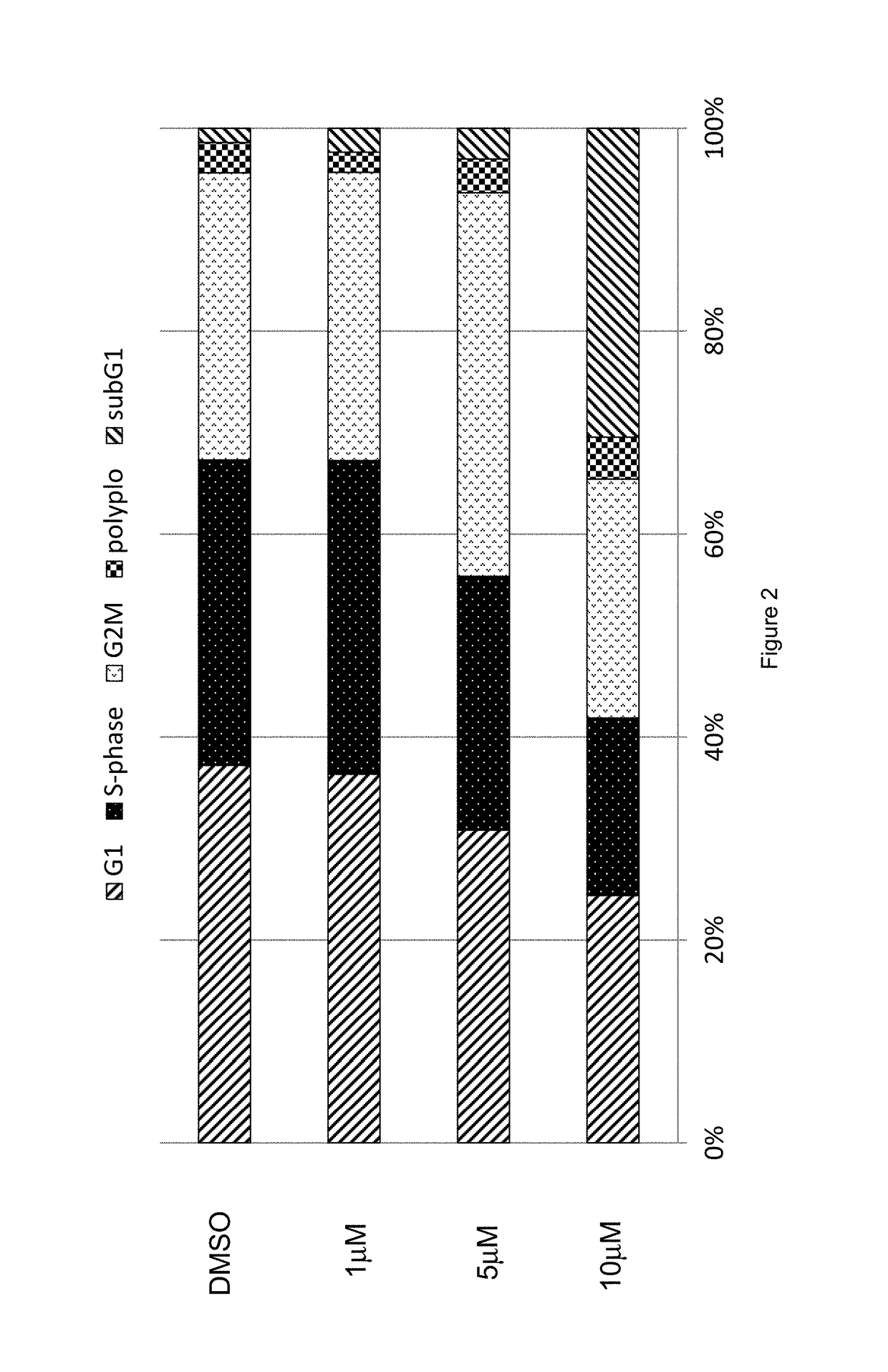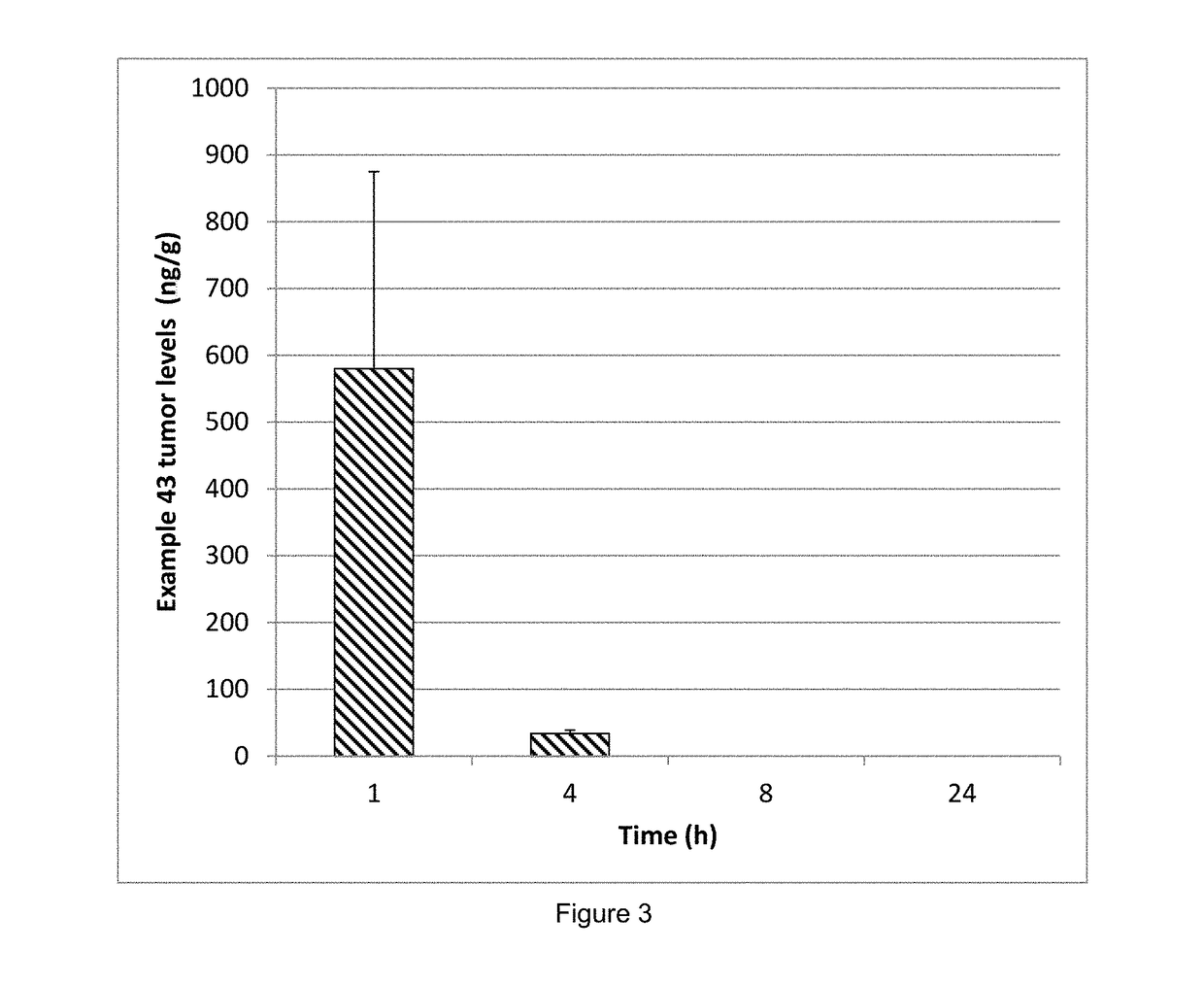Condensed tricyclic compounds as protein kinase inhibitors
a tricyclic compound and protein kinase technology, applied in the field of new pharmaceutically useful compounds, can solve the problems of limited clinical response, recurrent resistance to mitotic poisons, and one simply cannot predict if, so as to improve the in vivo half-life, facilitate preparation and detection, and increase the effect of metabolic stability
- Summary
- Abstract
- Description
- Claims
- Application Information
AI Technical Summary
Benefits of technology
Problems solved by technology
Method used
Image
Examples
examples and experimental
[0444]The following Examples illustrate the invention.
[0445]Herein after, the term “CCTLC” means centrifugal circular thin-layer chromatography, “DAD” means diode-array detector, “DCM” means dichloromethane, “DIPEA” means diisopropylethylamine, “DME” means 1,2-dimethoxyethane, “DMF” means dimethylformamide, “eq” means equivalents, “EtOAc” means ethyl acetate, “h” means hours, “min” means minutes, “HPLC” means high performance liquid chromatography, “MeOH” means methanol, “mw” means microwave, “nBuOH” means n-butanol, “NMR” means nuclear magnetic resonance, “Pd(PPh3)4” means tetrakis(triphenylphosphine)-palladium, “THF” means tetrahydrofuran, “CHCl3” means chloroform, “PdCl2dppf” means 1,1′-bis(diphenylphosphino)ferrocene-palladium(II)dichloride dichloromethane complex, “AcCN” means acetonitrile, “Na2SO4” means sodium sulphate, “rt” means room temperature, “c-Hex” means cyclohexane, “CDCl3” means deuterated chloroform, “DMSO” means dimethylsulfoxide, “NaHCO3” means sodium bicarbonate...
example 1
of Final Product 1
[1115]
[1116]Protocol A.
[1117]Trifluoroacetic acid (1.7 mL, 22.701 mmol, 50 eq) was added to intermediate X (165 mg, 0.454 mmol, 1 eq). The reaction mixture was heated at 100° C. in the MW (Biotage) for 1 h. Trifluoroacetic acid was evaporated under reduce pressure. The resulting crude product was dissolved in DCM-MeOH and treated with NH3 7N in MeOH (˜2 mL). Then, this mixture (pH=8) was concentrated and loaded into silica column. The residue was purified by flash chromatography (Biotage, 0% to 10% MeOH in DCM) to afford the final product 1 as a white solid (50 mg, yield: 45%).
[1118]Protocol B.
[1119]To a solution of intermediate X (81 mg, 0.314 mmol, 1 eq.) in DMF (3.60 mL) and MeOH (3.60 mL) was added 32% aq NH3 (7.14 mL). The reaction mixture was heated at 80° C. in a closed vessel for 24 h. Solvent was evaporated and the crude was purified by HPLC preparative to give the amide product as a white solid (38 mg, yield: 50%)
example 2
of Final Product 2
[1120]
[1121]This product was obtained as a byproduct in the synthesis of the final product 1 following Protocol B (yield: 24%). The compounds of Examples 1 and 2 can be separated by TLC (DCM / MeOH 10:1): Rf=0.5 (Example 1) and Rf=0.2 (Example 2).
PUM
 Login to view more
Login to view more Abstract
Description
Claims
Application Information
 Login to view more
Login to view more - R&D Engineer
- R&D Manager
- IP Professional
- Industry Leading Data Capabilities
- Powerful AI technology
- Patent DNA Extraction
Browse by: Latest US Patents, China's latest patents, Technical Efficacy Thesaurus, Application Domain, Technology Topic.
© 2024 PatSnap. All rights reserved.Legal|Privacy policy|Modern Slavery Act Transparency Statement|Sitemap



